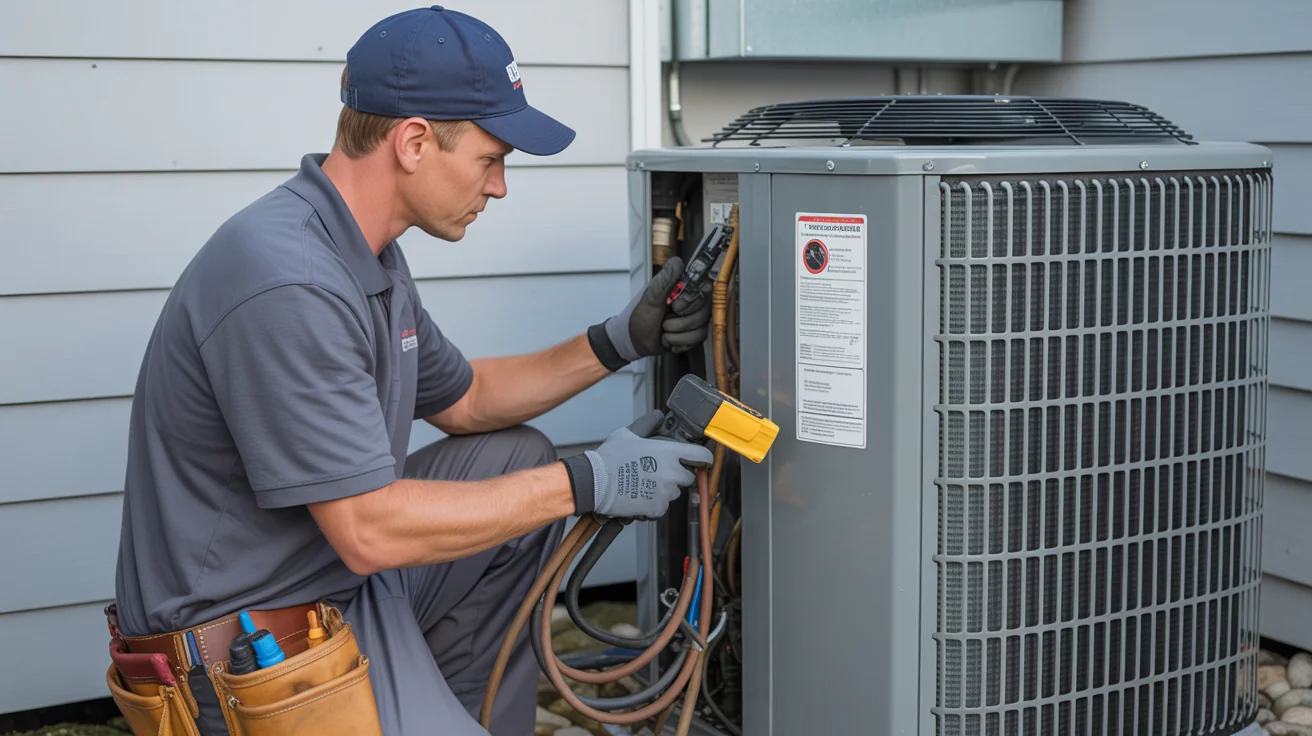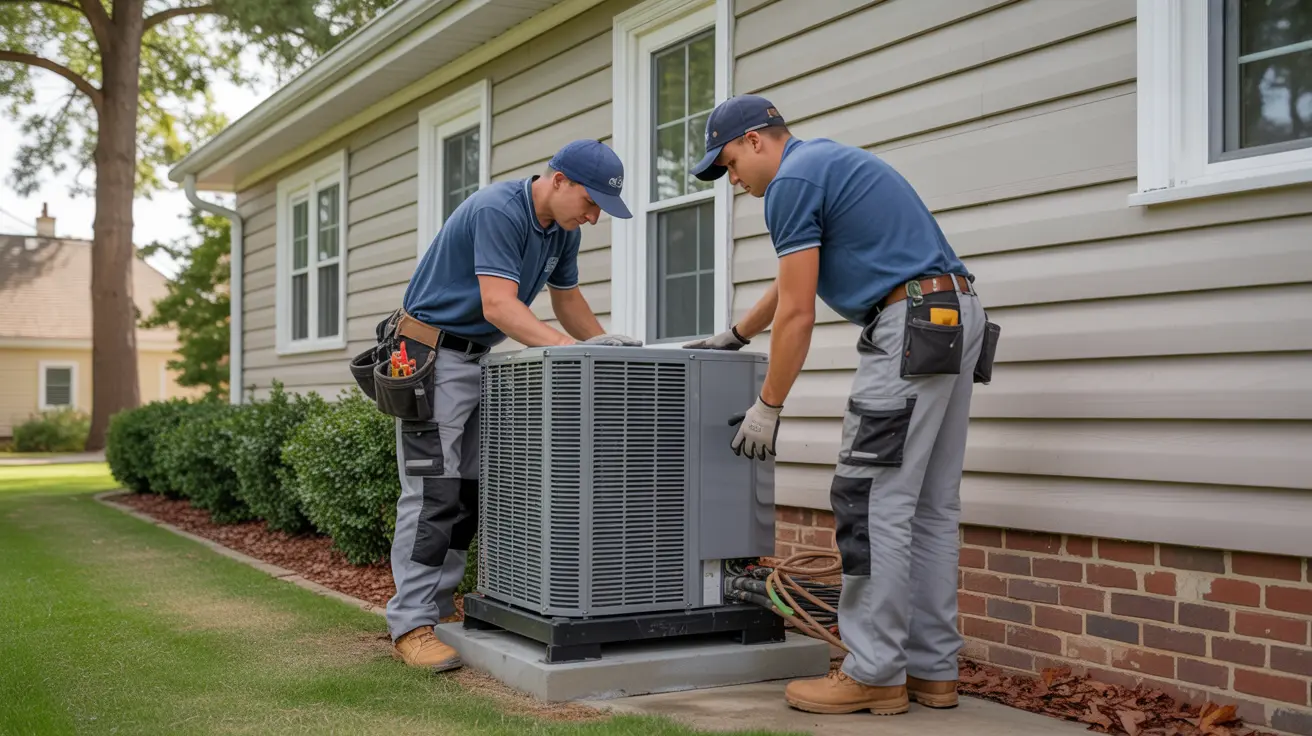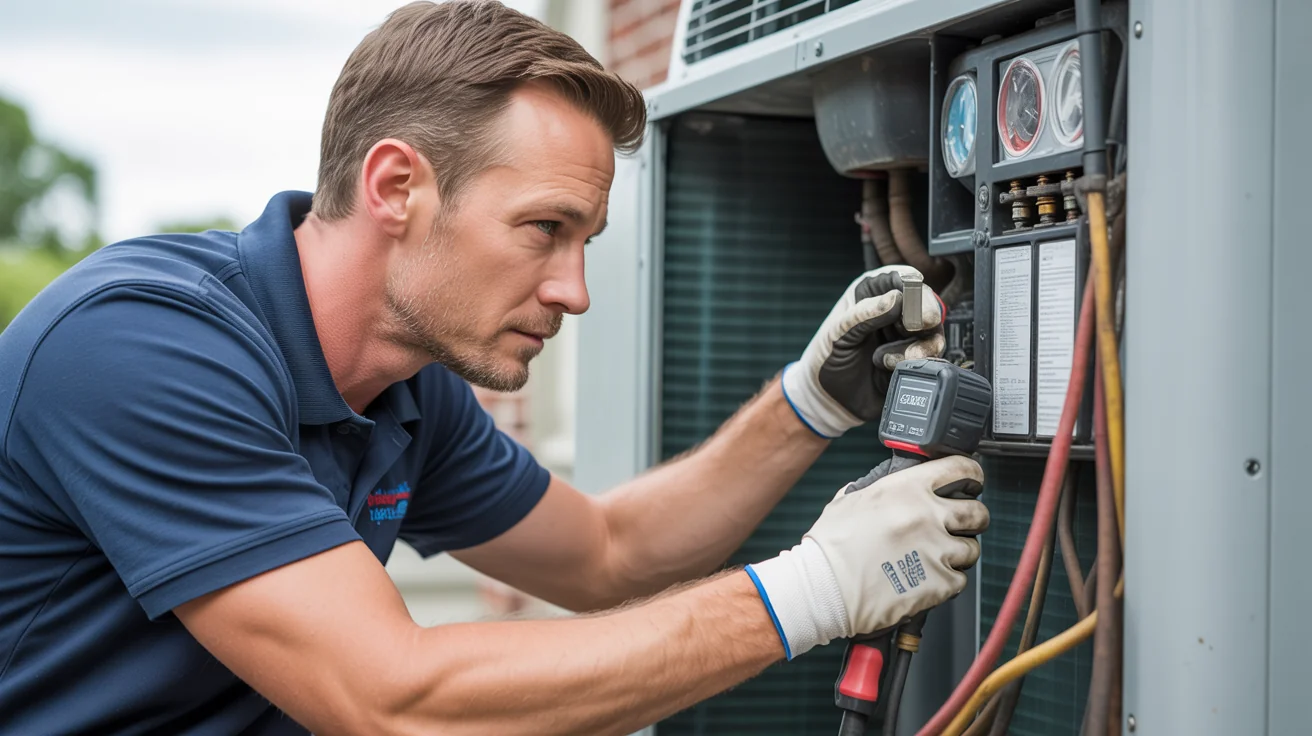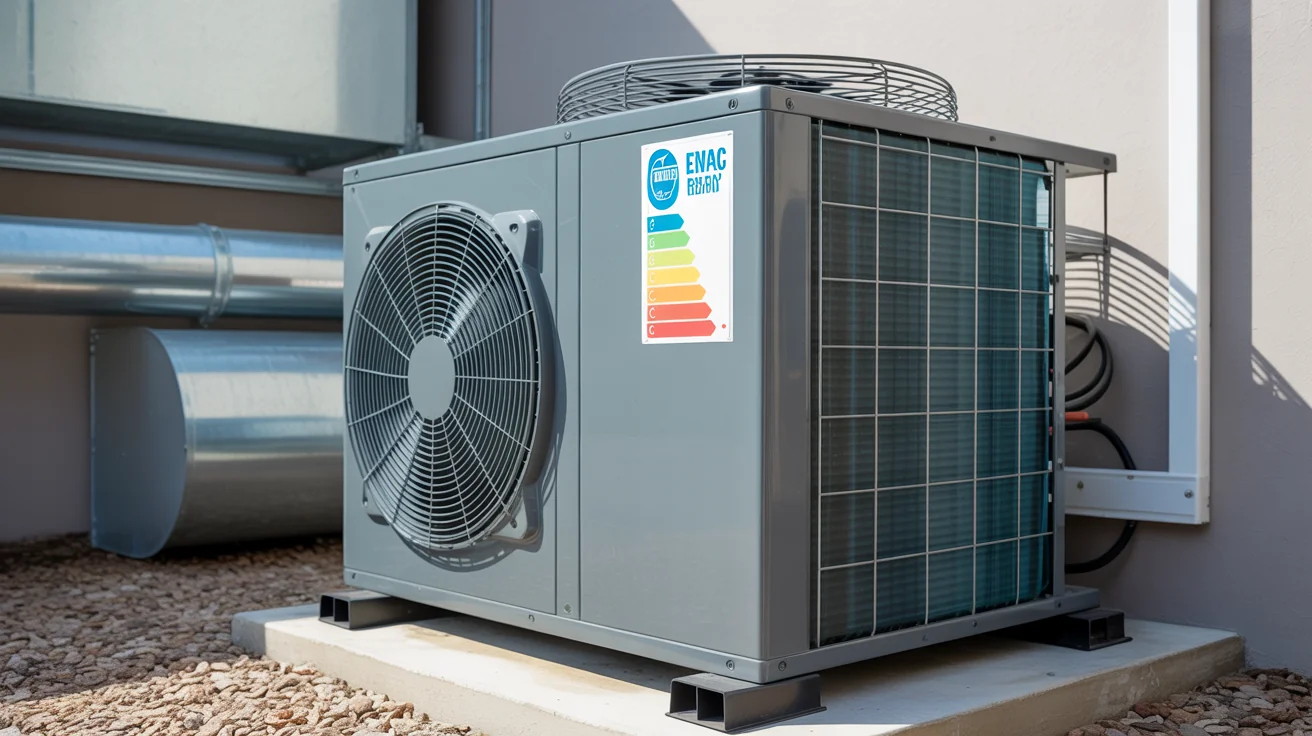Refrigerant Recovery and Recycling Standards Texas (2025): Complete EPA Compliance Guide & Environmental Best Practices
Comprehensive Texas refrigerant recovery and recycling guide. EPA regulations, proper procedures, certification needs, and environmental compliance for 2025.

EPA-Compliant Refrigerant Recovery Standards for Texas
In my 15 years serving HVAC clients across North Texas, I’ve seen how proper refrigerant recovery saves homeowners thousands in penalties and repairs. At Jupitair HVAC, we always follow EPA-certified recovery processes to ensure compliance and protect the environment. What used to be “suggestions” are now federal law with teeth. I’ve seen contractors fined $25,000 for venting refrigerant during routine service calls.
This isn’t just regulatory compliance - it’s environmental responsibility. Every pound of refrigerant we handle properly instead of venting protects the ozone layer and prevents climate damage. When you understand why proper refrigerant recovery costs more, you’ll never again wonder why legitimate contractors charge more than the guy who “can do it cheaper.”
Texas takes refrigerant compliance seriously because we have the largest HVAC market in the country. Twelve million residential units plus countless commercial systems means millions of pounds of refrigerant moving through our state annually.
Our extreme climate creates more refrigerant-related service calls than moderate climates. When systems fail during 108-degree heat waves, the pressure to get them running quickly can tempt technicians to cut corners on proper refrigerant recovery.
The environmental impact is staggering. One pound of R-410A refrigerant vented to atmosphere has the same global warming potential as burning 1,400 gallons of gasoline. When you multiply that by millions of service calls annually, proper recovery becomes critical for environmental protection.
CRITICAL REALITY: One pound of improperly vented R-410A refrigerant has the same climate impact as burning 1,400 gallons of gasoline. Professional recovery isn’t just legally required – it’s environmentally essential.
EPA Refrigerant Recovery Regulations Overview
Clean Air Act Section 608 Requirements
Universal Application: All HVAC technicians working with refrigerant-containing systems must comply with EPA Section 608 regulations, regardless of system size or application. This includes:
Recovery needs require capturing refrigerant before system opening to prevent environmental release and comply with federal law. Certification mandates restrict this work to EPA-certified technicians only, ensuring proper handling and environmental protection. Equipment standards mandate using certified recovery equipment that meets EPA performance specifications for capture rates and purity. Record keeping requires detailed documentation of all refrigerant handling activities, creating accountability and compliance trails. Leak repair becomes mandatory for systems above specific leak thresholds, preventing ongoing environmental damage from refrigerant losses.
2025 Regulatory Updates
Enhanced Enforcement Measures:
Increased penalties with doubled base fines for repeat violations send a clear message that environmental violations carry serious financial consequences. Digital reporting requires electronic compliance documentation, creating permanent records that improve enforcement capabilities and accountability. Supply chain tracking mandates refrigerant purchase and use reporting, allowing EPA to monitor refrigerant flows and identify potential violations. Training requirements now include updated certification standards every 3 years, ensuring technicians stay current with evolving regulations and best practices.
New Technology Standards:
Alternative refrigerants including R-32 and low-GWP refrigerant options require updated handling procedures and safety protocols due to different properties and risks. Recovery efficiency standards now demand higher capture rates exceeding 99%, virtually eliminating refrigerant releases during service work. Equipment certification requires third-party testing to verify performance claims and ensure recovery units meet enhanced standards. Disposal tracking mandates complete chain-of-custody documentation from initial recovery through final disposal or reclamation.
Texas-Specific Regulatory Framework
Texas Commission on Environmental Quality (TCEQ)
State Authority Requirements: TCEQ supplements federal EPA regulations with additional Texas-specific needs:
Contractor licensing through the Air Conditioning Contractors License (TACL) ensures businesses meet state-specific professional standards for refrigerant handling. Business registration includes environmental services permits for companies handling hazardous materials like refrigerants. Waste disposal follows Texas hazardous waste management compliance rules, ensuring proper handling and disposal of contaminated refrigerants. Inspection programs conduct regular compliance auditing, with unannounced inspections that verify proper procedures and documentation. Violation reporting requires mandatory incident documentation, creating accountability and helping prevent repeat violations.
Municipal Regulations
Local Jurisdiction Requirements:
Major Cities (Dallas, Fort Worth, Austin, Houston):
Permit requirements include refrigerant handling permits for large systems, ensuring major installations and service work meet local environmental protection standards. Inspection protocols mandate pre-work and completion inspections for significant refrigerant work, verifying proper procedures and environmental protection. Documentation standards establish local record-keeping requirements beyond federal standards, creating additional accountability layers. Environmental impact assessments require air quality protection measures in sensitive areas or large-scale refrigerant operations.
North Texas Specific:
Frisco and Plano maintain enhanced commercial system requirements reflecting the high concentration of businesses and advanced HVAC systems in these areas. McKinney and Allen focus on residential compliance verification, ensuring proper refrigerant handling in the numerous residential developments and service calls. Regional coordination facilitates multi-jurisdiction enforcement cooperation, allowing efficient handling of violations that cross city boundaries.
Refrigerant Classification and Handling
Refrigerant Types and Environmental Impact
Class I Substances (Ozone-Depleting):
R-22 (HCFC-22):
Ozone Depletion Potential of 0.055 makes R-22 a controlled substance under the Montreal Protocol, requiring careful handling to prevent environmental damage. Global Warming Potential of 1,810 means each pound of R-22 released has the climate impact of 1,810 pounds of carbon dioxide. Phase-out status shows production has been banned since 2010, making existing refrigerant increasingly valuable and recovery crucial. Recovery requirements mandate 100% capture with no exceptions, reflecting the severe environmental consequences of release. Texas inventory includes 2.5+ million systems still operating with R-22, creating ongoing recovery demands as systems are serviced or replaced.
R-12 (CFC-12):
Ozone Depletion Potential of 1.0 makes R-12 the benchmark for ozone-depleting substances, with maximum damage potential to the stratospheric ozone layer. Global Warming Potential of 10,900 creates massive climate impact from any release, making recovery absolutely critical for environmental protection. Complete phase-out status means no new R-12 production, with recovery-only operations for existing systems. Specialized handling requires extreme care and specialized recovery equipment due to the severe environmental consequences of any release.
Class II Substances (Non-Ozone Depleting):
R-410A:
Ozone Depletion Potential of 0 means R-410A doesn’t damage the ozone layer, making it an acceptable replacement for older refrigerants. Global Warming Potential of 2,088 still creates significant climate impact, requiring careful handling to prevent atmospheric release. Current standard status makes R-410A the most common residential refrigerant in new systems throughout Texas. Recovery requirements demand 99%+ capture rates, virtually eliminating releases during service work. Future phase-down scheduled through 2035 will gradually reduce R-410A use in favor of lower-GWP alternatives.
R-32:
Ozone Depletion Potential of 0 makes R-32 environmentally friendly regarding ozone layer protection, qualifying it as a long-term refrigerant solution. Global Warming Potential of 675 represents a significant improvement over R-410A, reducing climate impact by approximately 67% per pound. Emerging standard status positions R-32 as the next-generation residential refrigerant for new installations and replacements. Handling requirements acknowledge mild flammability, requiring special procedures and safety precautions during recovery and service. Texas adoption is increasing in new installations as manufacturers transition to lower-GWP refrigerants and technicians receive proper training.
Refrigerant Recovery Thresholds
EPA-Required Recovery Levels:
| System Type | R-22 Recovery | R-410A Recovery | R-32 Recovery |
|---|---|---|---|
| Small appliances (<5 lbs) | 90% | 90% | 90% |
| Low-pressure systems | 25 in. Hg vacuum | 25 in. Hg vacuum | 25 in. Hg vacuum |
| High-pressure systems | 15 in. Hg vacuum | 15 in. Hg vacuum | 15 in. Hg vacuum |
| Very high-pressure | 0 psig | 0 psig | 0 psig |
Texas Enhanced Standards: Commercial systems: 95%+ recovery rate required. Environmental zones: 99%+ recovery in sensitive areas. Large systems: third-party verification required. Documentation: detailed recovery records mandatory.
Professional Recovery Procedures
Pre-Recovery System Assessment
Safety Evaluation Protocol:
- Electrical safety: De-energize system, lockout/tagout procedures
- Pressure testing: System integrity verification
- Leak detection: Identify all refrigerant escape points
- Contamination assessment: Oil, moisture, and debris evaluation
- Recovery planning: Equipment selection and procedure development
System Documentation: Refrigerant type and quantity: nameplate vs. actual charge. System age and condition: maintenance history and modifications. Previous service records: recovery and recharge documentation. Environmental conditions: temperature, humidity, and access factors.
Professional Recovery Equipment
EPA-Certified Recovery Units:
Self-Contained Recovery Units: Capacity range: 1-10 cfm refrigerant flow. Application: residential and light commercial systems. Features: automatic shutoff, oil separation, filter/dryers. Certification: ul-listed, epa section 608 compliant. Cost: $2,500-8,000 for professional units.
System-Dependent Recovery: Lower cost option: $800-2,500 initial investment. Limitations: requires functional system compressor. Applications: simple refrigerant removal only. Speed: slower recovery rates (2-6 cfm).
Advanced Recovery Systems: High-capacity units: 15+ cfm for large commercial systems. Multi-refrigerant capability: handle various refrigerant types. Integrated recycling: on-site refrigerant cleaning capability. Digital controls: automated recovery and documentation.
Step-by-Step Recovery Procedure
Phase 1: Equipment Setup (15-30 minutes)
- Recovery unit inspection: Verify calibration and functionality
- Cylinder preparation: Check certification dates and capacity
- Manifold connection: Proper gauge set and hose configuration
- Leak testing: Verify all connections before operation
- Safety equipment: Personal protective equipment donning
Phase 2: Initial Recovery (30-90 minutes)
- Liquid recovery: Remove liquid refrigerant first for efficiency
- High-side recovery: Extract refrigerant from condenser
- Low-side recovery: Complete evaporator refrigerant removal
- System monitoring: Track pressure and temperature changes
- Weight documentation: Record recovered refrigerant quantity
Phase 3: Deep Recovery (30-60 minutes)
- Vapor recovery: Extract remaining gaseous refrigerant
- Vacuum pulling: Achieve EPA-required vacuum levels
- Hold testing: Verify system holds vacuum (leak testing)
- Final evacuation: Ensure complete refrigerant removal
- System isolation: Prepare for service or disposal
Phase 4: Documentation (15-30 minutes)
- Recovery records: Complete EPA-required forms
- Cylinder labeling: Proper refrigerant identification
- Chain of custody: Document refrigerant transfer
- System tagging: Mark system service status
- Customer notification: Explain work completed and next steps
Recycling and Reclamation Standards
On-Site Recycling Requirements
EPA Recycling Standards: Recycling involves cleaning refrigerant to industry purity standards using equipment that: Removes moisture: <15 ppm water content. Filters contaminants: particulates and acid removal. Separates oil: <500 ppm oil content maximum. Tests purity: meets ari 700 standards. Documents results: purity certification required.
Recycling Equipment Specifications: Filter/dryer capacity: adequate for system contamination levels. Moisture removal: molecular sieve or thermal drying capability. Oil separation: centrifugal or thermal separation methods. Purity testing: integrated testing or laboratory analysis. Certification: ul-listed recycling equipment required.
Off-Site Reclamation Process
Professional Reclamation Services: When on-site recycling isn’t feasible or contamination exceeds recycling capability:
- Contaminated refrigerant removal: Complete system recovery
- Proper packaging: DOT-approved cylinder transportation
- Chain of custody: Documentation throughout transport
- Professional processing: EPA-licensed reclamation facilities
- Purity restoration: Return to virgin refrigerant specs
Reclamation Facility Requirements: EPA certification: licensed hazardous waste facility. Process verification: third-party testing and certification. Environmental compliance: air and water quality protection. Documentation: complete processing records. Quality assurance: meet ahri 700 reclaimed refrigerant standards.
EPA Certification Requirements
Technician Certification Categories
Type I Certification: Small Appliances System definition: <5 pounds refrigerant charge. Applications: window units, dehumidifiers, compact refrigerators. Requirements: online testing available. Validity: lifetime certification. Texas considerations: limited commercial application.
Type II Certification: High-Pressure Systems System definition: >200 psig normal operating pressure. Applications: most residential and commercial ac systems. Requirements: proctored examination. Scope: recovery, recycling, and leak detection. Texas relevance: primary certification for hvac technicians.
Type III Certification: Low-Pressure Systems System definition: <200 psig normal operating pressure. Applications: centrifugal chillers, absorption systems. Requirements: advanced technical knowledge. Scope: large commercial and industrial systems. Specialized training: extensive recovery procedures.
Universal Certification: All System Types Comprehensive coverage: types i, ii, and iii combined. Industry standard: required for most hvac professionals. Advanced knowledge: all refrigerant systems and procedures. Career advantage: broadest service capabilities. Texas preference: most employers require universal certification.
At Jupitair HVAC, I hold EPA Section 608 Universal Certification, ensuring our team can handle any refrigerant type safely and legally. This certification, combined with our Texas TACL license, means every recovery procedure we perform meets or exceeds federal and state requirements.
Certification Maintenance and Updates
Continuing Education Requirements: Triennial updates: every 3 years recertification. New refrigerant training: alternative refrigerant handling. Regulatory updates: epa and state requirement changes. Safety training: updated handling and emergency procedures. Documentation: maintain certification records.
Jupitair’s Certification Program: Universal EPA certification: all technicians certified. Advanced training: manufacturer-specific procedures. Safety specialization: emergency response protocols. Regulatory compliance: regular training updates. Documentation systems: complete record-keeping protocols.
Documentation and Record Keeping
Required Documentation Systems
EPA Section 608 Records: All refrigerant handling activities require complete documentation:
- Service records: Date, technician, and procedures performed
- Recovery documentation: Quantities removed and methods used
- Recycling records: Purity testing and equipment certification
- Disposal tracking: Chain of custody for contaminated refrigerant
- Leak repair documentation: Required for systems above thresholds
Texas State Requirements: Contractor licensing: tacl number on all documentation. Customer copies: complete service records provided. Environmental reporting: large system compliance reporting. Inspection access: records available for regulatory review. Retention period: minimum 5-year record retention.
Digital Documentation Systems
Modern Record Keeping: Professional HVAC companies use digital systems for complete documentation:
Mobile applications: field technician data entry. Cloud storage: secure document retention and access. Customer portals: online access to service records. Regulatory reporting: automated compliance submissions. Audit trails: complete modification and access logging.
Jupitair’s Documentation Standards: Electronic work orders: complete service documentation. Photo documentation: before/after system conditions. Recovery certificates: epa-compliant refrigerant handling. Customer copies: immediate electronic delivery. Regulatory compliance: automated reporting systems.
Common Violations and Penalties
Frequent EPA Violations
Most Common Section 608 Violations:
- Venting refrigerant: Intentional or negligent release
- Uncertified technicians: Non-certified personnel performing work
- Improper recovery: Inadequate refrigerant removal
- Documentation failures: Missing or incomplete records
- Equipment violations: Non-certified or improper recovery equipment
Violation Consequences: First offense: $25,000+ penalties per violation. Repeat violations: criminal charges and business closure. Environmental damage: additional cleanup and restoration costs. Professional licensing: loss of contractor licenses. Insurance impacts: liability coverage exclusions.
Texas Enforcement Actions
Recent Enforcement Statistics (2025): EPA penalties issued: 47 texas hvac contractors. Average fine amount: $18,500 per violation. Criminal prosecutions: 3 cases referred to department of justice. License suspensions: 12 tacl licenses suspended. Total penalties: $2.1 million in epa fines.
Common Enforcement Triggers: Customer complaints: reports of improper venting. Competitor reporting: industry self-policing. Regulatory inspections: random and targeted audits. Environmental incidents: refrigerant spills and releases. Documentation audits: record-keeping compliance reviews.
Environmental Benefits of Proper Recovery
Climate Impact Reduction
Quantified Environmental Benefits: Proper refrigerant recovery and recycling provides significant environmental protection:
Ozone layer protection: prevent ozone-depleting substance release. Climate change mitigation: reduce greenhouse gas emissions. Resource conservation: extend refrigerant lifecycle through recycling. Waste reduction: minimize hazardous waste generation. Energy efficiency: reduce manufacturing energy for virgin refrigerants.
Texas Environmental Impact: Annual recovery volume: 2.5+ million pounds of refrigerant. Equivalent CO2 reduction: 5.2 billion pounds annually. Ozone protection: prevent 125,000 kg ozone-depleting potential. Resource conservation: 85% of recovered refrigerant recycled/reclaimed. Economic benefit: $47 million in avoided environmental costs.
Sustainability Leadership
Industry Sustainability Trends: Alternative refrigerants: lower global warming potential options. Recovery efficiency: advanced equipment achieving 99%+ capture. Lifecycle management: cradle-to-grave refrigerant tracking. Technology innovation: leak detection and prevention systems. Professional standards: enhanced technician training and certification.
Emergency Refrigerant Recovery Services
Urgent Recovery Situations
Emergency Recovery Triggers: System leaks: large refrigerant releases requiring immediate action. Equipment failure: compressor failures with contaminated refrigerant. Storm damage: weather-related system damage and refrigerant release. Safety concerns: indoor refrigerant leaks affecting occupants. Environmental incidents: soil or water contamination risks.
Rapid Response Protocol
Jupitair’s Emergency Recovery Services: 24/7 availability: immediate response for environmental emergencies. Certified technicians: universal epa certification for all recovery work. Professional equipment: certified recovery units and proper cylinders. Documentation systems: complete epa-compliant paperwork. Environmental coordination: regulatory agency notification when required.
Emergency Response Timeline: Initial response: 30 minutes for environmental emergencies. On-site assessment: safety evaluation and containment planning. Recovery execution: professional refrigerant capture and removal. Documentation completion: epa and state compliance paperwork. Follow-up coordination: regulatory reporting and customer communication.
Professional Recovery Equipment Selection
Equipment Specifications for North Texas
Climate Considerations: Texas heat and humidity affect recovery equipment performance:
High ambient operation: equipment rated for 115°f+ operation. Humidity resistance: moisture handling and drying capability. Dust protection: sealed components for dusty conditions. Portability: lightweight units for attic and rooftop access. Power needs: 115v and 230v capability for various installations.
Investment Analysis for Contractors
Professional Equipment Costs:
| Equipment Type | Initial Cost | Annual Maintenance | ROI Timeline |
|---|---|---|---|
| Basic recovery unit | $2,500-4,000 | $300-500 | 18-24 months |
| Advanced unit | $5,000-8,000 | $500-800 | 24-36 months |
| Commercial system | $10,000-15,000 | $1,000-1,500 | 36-48 months |
| Mobile laboratory | $25,000+ | $2,500+ | 48-60 months |
Jupitair’s Equipment Investment: Multiple recovery units: capacity for simultaneous service calls. Backup equipment: ensure continuous service availability. Calibration programs: regular equipment certification maintenance. Technology upgrades: stay current with regulatory needs. Training investments: technician proficiency with all equipment.
Future Regulatory Trends
Emerging Environmental Standards
Global Refrigerant Trends: Montreal Protocol amendments: continued phase-down schedules. Kigali Amendment: hfc reduction needs through 2047. Alternative refrigerants: natural and synthetic low-gwp options. Technology innovation: advanced leak detection and prevention. International coordination: global environmental protection initiatives.
Texas Leadership Initiatives: Environmental leadership: early adoption of stricter standards. Industry partnership: collaboration with hvac manufacturers. Education programs: enhanced technician training needs. Technology incentives: support for advanced recovery equipment. Regulatory efficiency: streamlined compliance documentation.
Preparing for Future Requirements
Professional Preparation Strategies: Advanced training: stay current with emerging refrigerant technologies. Equipment upgrades: invest in multi-refrigerant capable recovery systems. Certification maintenance: regular updates and skill development. Technology adoption: embrace digital documentation and reporting systems. Environmental leadership: exceed minimum regulatory needs.
Frequently Asked Questions
Q: What happens if refrigerant is accidentally vented during service? A: Any refrigerant release must be documented and reported if it exceeds EPA thresholds. Even small releases can trigger penalties if reported to EPA. Professional contractors use certified recovery equipment to prevent accidental releases.
Q: Can homeowners legally service their own HVAC systems with refrigerant? A: No, EPA Section 608 requires certified technicians to handle all refrigerant-containing systems, regardless of ownership. DIY refrigerant work is illegal and can result in significant EPA penalties.
Q: How long does professional refrigerant recovery take? A: Recovery time depends on system size and complexity. Residential systems typically require 2-4 hours for complete recovery, while large commercial systems may need 6-12 hours for proper EPA-compliant recovery.
Q: What happens to recovered refrigerant? A: Recovered refrigerant is either recycled on-site to industry purity standards or sent to EPA-licensed reclamation facilities for processing back to virgin refrigerant specs. Nothing is wasted or released to the atmosphere.
Q: Are there different needs for different refrigerant types? A: Yes, each refrigerant has specific recovery needs, handling procedures, and safety considerations. R-22 systems have higher recovery needs due to ozone depletion concerns, while R-32 requires special handling due to mild flammability.
Q: How can I check my contractor is EPA certified? A: Request to see EPA Section 608 certification cards and check contractor licensing with the Texas Department of Licensing and Regulation. Legitimate contractors proudly display certifications and provide documentation upon request.
Your EPA Compliance Action Plan
Before Any Refrigerant Work
- Verify certification: Confirm technician EPA Section 608 certification
- Check contractor licensing: Ensure current TACL license
- Request documentation: Ask for recovery and disposal procedures
- Understand costs: EPA-compliant service costs more but protects you legally
During Service Work
- Observe procedures: Professional contractors use certified recovery equipment
- Documentation review: Verify complete paperwork and certification
- Environmental awareness: No refrigerant should be vented to atmosphere
- Quality confirmation: Ensure proper procedures are followed
Get EPA-Compliant Refrigerant Services
Don’t risk EPA violations or environmental damage with unqualified contractors. Jupitair’s certified professionals provide complete EPA-compliant refrigerant recovery and recycling services for all North Texas HVAC systems.
Ready for professional service? Call (940) 390-5676 — speak with epa-certified refrigerant specialists. Schedule Compliant Service at jupitairhvac.com/contact. Emergency Recovery Services available 24/7 for environmental incidents. Complete Documentation provided for all refrigerant handling.
Protect the environment and avoid EPA penalties. Our certified technicians make sure complete compliance with all federal and Texas refrigerant regulations while delivering superior HVAC service.
EPA Section 608 Universal Certified Technicians | Complete Regulatory Compliance | Serving North Texas since 2008
Jupitair HVAC: Licensed & Insured, EPA certified, and providing environmentally responsible refrigerant services across Plano, Frisco, McKinney, Allen, The Colony, Little Elm, and surrounding North Texas communities.
Need Professional HVAC Service?
Our certified technicians are ready to help with any HVAC needs in North Texas




